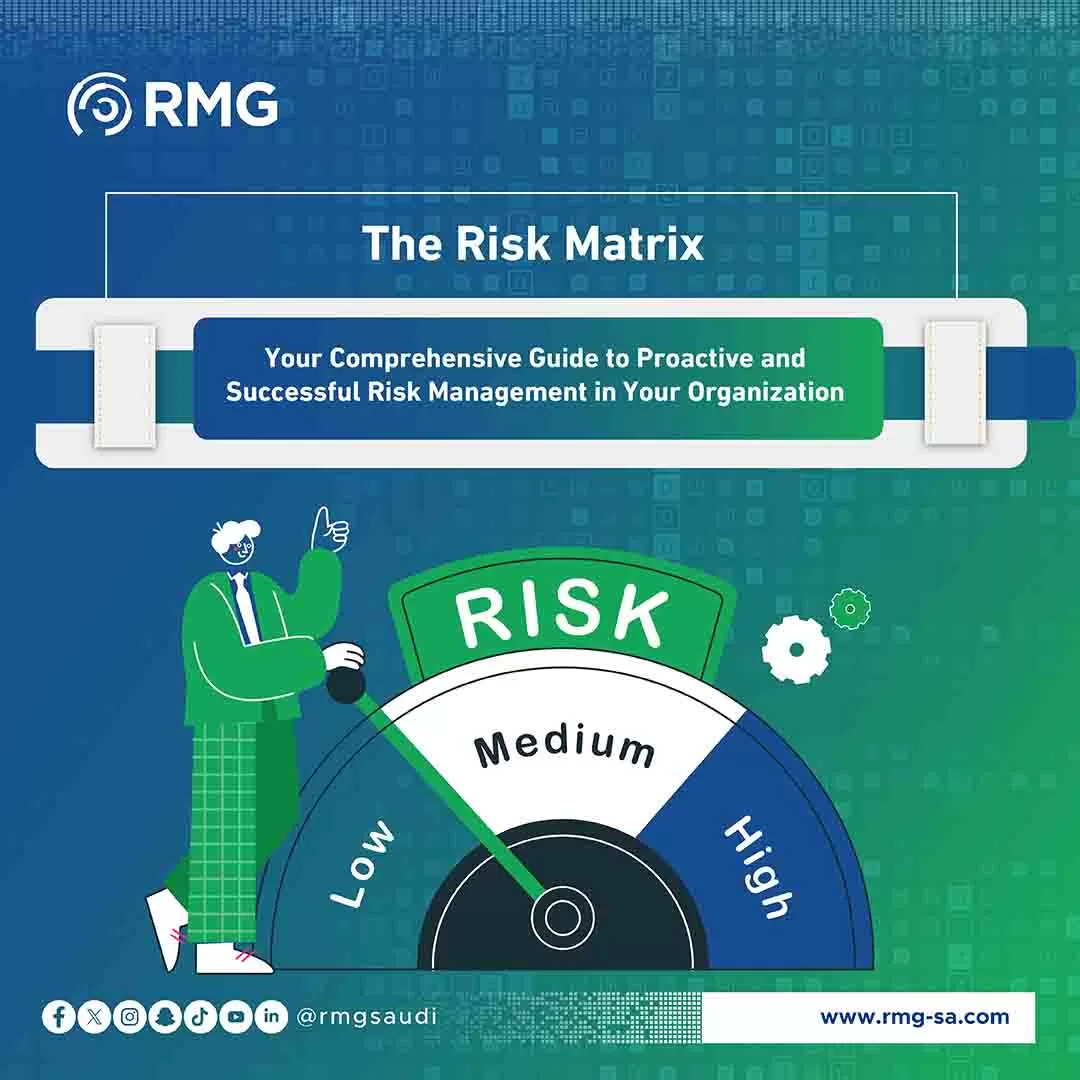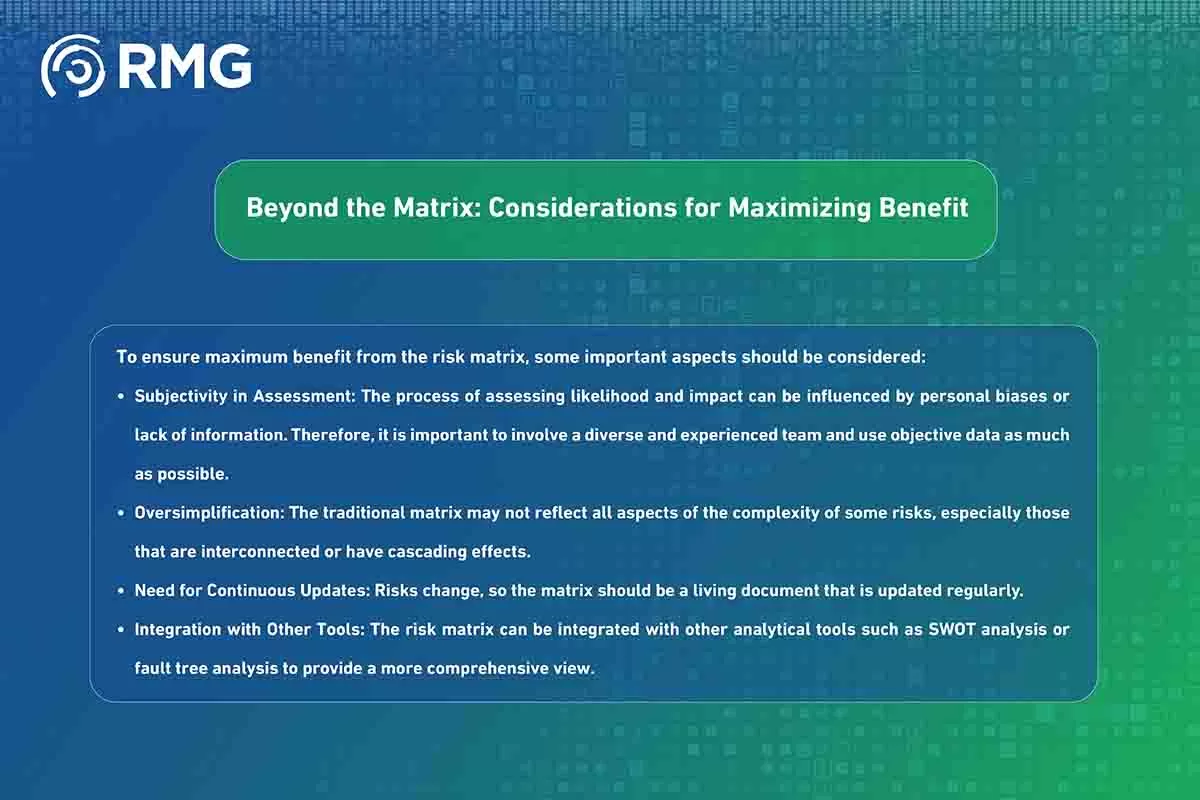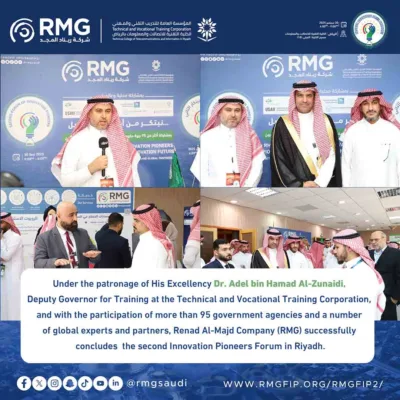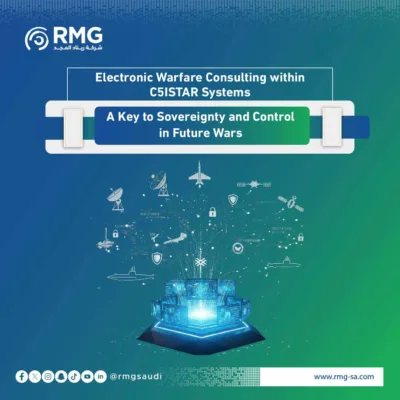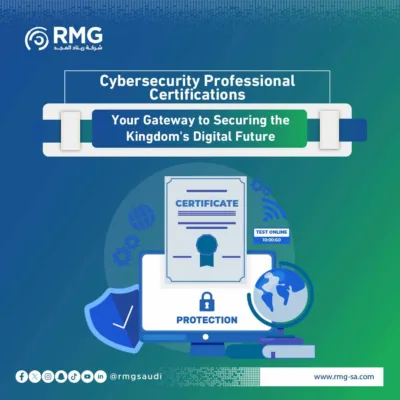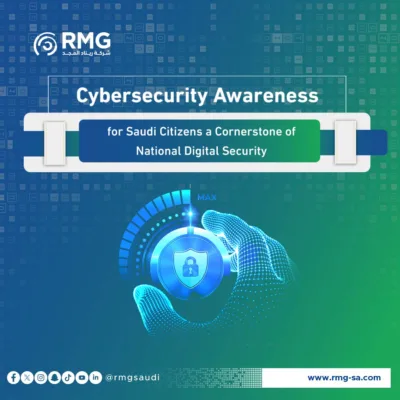Discover how the risk matrix empowers you to effectively identify, analyze, and assess risks. Learn about its uses, how it works, and why it’s an indispensable tool for achieving your strategic goals and protecting your business.
Towards a Deeper Understanding of the World of Risks
In the dynamic and constantly changing business world, organizations of all sizes and types face challenges and risks that can affect their ability to achieve their strategic objectives. Ignoring these risks or dealing with them with delayed reactions can lead to dire consequences, ranging from financial losses and reputation damage to project failure or even the collapse of the entire organization. Hence, the importance of adopting a proactive approach to risk management emerges, and the Risk Matrix is one of the fundamental and primary tools in this approach. It provides a structured and visual framework for understanding and evaluating risks and making informed decisions about them.
What is a Risk Matrix? A Comprehensive and Simplified Definition
The risk matrix, also known as the probability-impact matrix, is a visual analytical tool used to assess and prioritize risks based on two main factors: the likelihood of the risk occurring and the severity of the impact or consequences resulting from its occurrence. This matrix is typically represented as a table or grid, where one axis represents the likelihood of occurrence (often categorized from very low to very high), and the other axis represents the severity of the impact (from negligible to catastrophic). By intersecting these two factors, the overall risk level for each risk is determined, helping decision-makers focus their efforts and resources on the most critical risks.
It acts as a roadmap guiding organizations towards a deeper understanding of the risks surrounding them, helping to transform the concept of “risk” from a mere feeling of anxiety into a measurable and manageable element.
Strategic Importance: Why is the Risk Matrix Used to Achieve Success?
The risk matrix is used to achieve a wide range of vital objectives that contribute to the sustainability and growth of organizations. Its importance is evident in the following points:
- Effective Prioritization: The matrix helps distinguish between risks that require immediate attention and those that can be dealt with later or accepted. This ensures that limited resources (time, money, competencies) are directed towards the most urgent and impactful issues.
- Improved Decision-Making: It provides an objective and logical basis for making risk management decisions, rather than relying on intuition or inaccurate estimates.
- Enhanced Communication and Transparency: It offers a common language and a unified understanding of risks among various stakeholders inside and outside the organization, facilitating discussion and collaboration.
- Support for Strategic Planning: By understanding potential risks, organizations can integrate risk management strategies into their overall plans, increasing the chances of achieving strategic goals.
- Compliance with Regulatory and Legal Requirements: Many standards and regulations require organizations to conduct risk assessments, and the risk matrix is an effective tool for achieving this compliance.
- Efficient Resource Allocation: Based on the risk level assessment, necessary resources can be allocated more efficiently to develop and implement risk mitigation or response strategies.
- Building a Proactive Risk Culture: It encourages critical thinking about what can go wrong and motivates employees at all levels to contribute to identifying and managing risks.
The risk matrix is not just a technical tool; it is a management philosophy aimed at building resilience and adaptability in the face of uncertainty.
What Are the Uses of a Risk Matrix? Wide Applications Across Various Sectors
The uses of the risk matrix are numerous, spanning diverse fields and industries due to its flexibility and adaptability to different contexts. Among its most prominent uses are:
- Project Management: It is a vital tool for identifying risks that may threaten project success (such as budget overruns, schedule delays, quality issues) and prioritizing them.
- Occupational Safety and Health (HSE): Used to assess the risks of accidents and injuries in the workplace and determine the necessary preventive measures to ensure a safe working environment.
- Strategic Planning and Business Management: Helps identify operational, financial, market, and reputational risks that may affect an organization’s performance and competitiveness.
- Cybersecurity and Information Security: Used to assess threats and vulnerabilities in information systems and identify risks related to data breaches and cyberattacks.
- Quality Management: Contributes to identifying risks that may affect the quality of products or services and developing control measures.
- Financial and Banking Sector: Used to assess credit risks, market risks, and operational risks.
- Healthcare Sector: For assessing risks related to patient safety, quality of care, and compliance with medical standards.
- Crisis and Disaster Management: Helps prepare for natural or man-made risks and assess their potential impacts.
This diversity of applications demonstrates the importance of the risk matrix as a universal tool for effective risk management across various disciplines.
How Does a Risk Matrix Work? A Step-by-Step Practical Guide
Creating and using a risk matrix requires following a structured methodology. Here are the essential steps for how a risk matrix works:
- Define the Risk Context and Objectives:
- Define Scope: What project, process, or area will have its risks assessed?
- Define Criteria: Establish clear measures for likelihood and impact. For example, likelihood can be categorized as: (rare, unlikely, possible, probable, almost certain), and impact as: (negligible, minor, moderate, significant, catastrophic). These measures should be appropriate for the nature of the organization’s work.
- Identify Potential Risks (Risk Identification):
- Brainstorming: Gather a team of experienced and knowledgeable individuals from various departments to identify as many potential risks as possible.
- Document Analysis: Review previous reports, incident logs, project plans, and historical data.
- Surveys and Interviews: Gather information from employees and stakeholders.
- Checklists: Use checklists for common risks in the industry or field.
- Analyze and Evaluate Risks (Risk Analysis and Evaluation):
- Estimate Likelihood: For each identified risk, estimate the probability of its occurrence based on the predefined criteria.
- Estimate Impact: For each risk, estimate the magnitude of the consequences or damage that may result from its occurrence (financial, operational, reputational, safety, etc.) based on the criteria.
- Determine Risk Level: Each risk is plotted on the matrix based on its likelihood and impact assessment. The intersection of these two dimensions determines the overall risk level (e.g., low, medium, high, critical). Different colors (green, yellow, orange, red) are often used to visually represent different risk levels.
- Prioritize Risks (Risk Prioritization):
- Based on the risk level determined in the matrix, risks are ranked from highest to lowest. Risks with “critical” or “high” levels require immediate attention.
- Develop Risk Response Plans (Risk Treatment/Response Planning):
- For each priority risk, an appropriate response strategy is developed. Common strategies include:
- Avoidance: Changing plans or processes to completely avoid the risk.
- Mitigation: Taking actions to reduce the likelihood or impact of the risk.
- Transfer: Shifting the risk to a third party (e.g., insurance or subcontracting).
- Acceptance: Accepting the risk and dealing with its consequences if it occurs (usually for low-level risks).
- Monitor and Review (Monitoring and Review):
- The risk matrix is not a static document; it must be reviewed and updated regularly to reflect changes in the organization’s internal and external environment and to assess the effectiveness of response plans.
Following these steps diligently and accurately ensures that the risk matrix is an effective and valuable tool within the overall risk management system.
Beyond the Matrix: Considerations for Maximizing Benefit
To ensure maximum benefit from the risk matrix, some important aspects should be considered:
- Subjectivity in Assessment: The process of assessing likelihood and impact can be influenced by personal biases or lack of information. Therefore, it is important to involve a diverse and experienced team and use objective data as much as possible.
- Oversimplification: The traditional matrix may not reflect all aspects of the complexity of some risks, especially those that are interconnected or have cascading effects.
- Need for Continuous Updates: Risks change, so the matrix should be a living document that is updated regularly.
- Integration with Other Tools: The risk matrix can be integrated with other analytical tools such as SWOT analysis or fault tree analysis to provide a more comprehensive view.
Renad Al Majd Company (RMG): Your Strategic Partner in Risk Management and Achieving Excellence
Renad Al Majd Company (RMG) recognizes the utmost importance of proactive risk management in achieving sustainable organizational success. Based on our extensive experience and specialized team, we offer our esteemed clients from various government and private entities integrated solutions and distinguished consulting services in the field of risk management, including:
- Custom Risk Matrix Design and Development: We assist you in building a risk matrix that precisely aligns with your business nature, strategic objectives, and operational context, while setting realistic and applicable likelihood and impact criteria.
- Specialized Training Workshops: We provide interactive training programs on how the risk matrix works effectively, empowering your teams to identify, analyze, and assess risks efficiently.
- Comprehensive Risk Assessment: We help you conduct comprehensive assessments of operational, financial, strategic, and reputational risks, among others, to provide you with a clear vision of the overall risk landscape.
- Development of Risk Registers and Response Plans: We work with you to document risks in organized registers and develop practical and actionable response plans for all priority risks.
- Risk Governance and Compliance (GRC) Consulting: We provide support in establishing strong risk governance frameworks and ensuring compliance with relevant regulatory requirements and international standards.
- Support for Implementing Technical Risk Management Solutions: We assist in selecting and implementing tools and software that facilitate the automation and monitoring of risk management processes.

Invitation to Entities and Organizations to Benefit from Renad Al Majd’s Expertise
We invite all organizations, government and private entities that seek to enhance their capabilities in facing challenges and achieving their goals with confidence and security, to contact Renad Al Majd Company (RMG). Our team is fully prepared to provide the necessary support and consultation, and help you transform risk management from a burden into a true competitive advantage.
With Renad Al Majd, you are not just investing in a tool like the risk matrix; you are investing in building a safer and more prosperous future for your organization. Contact us today to discover how we can help you on your journey towards operational excellence and effective risk management.














